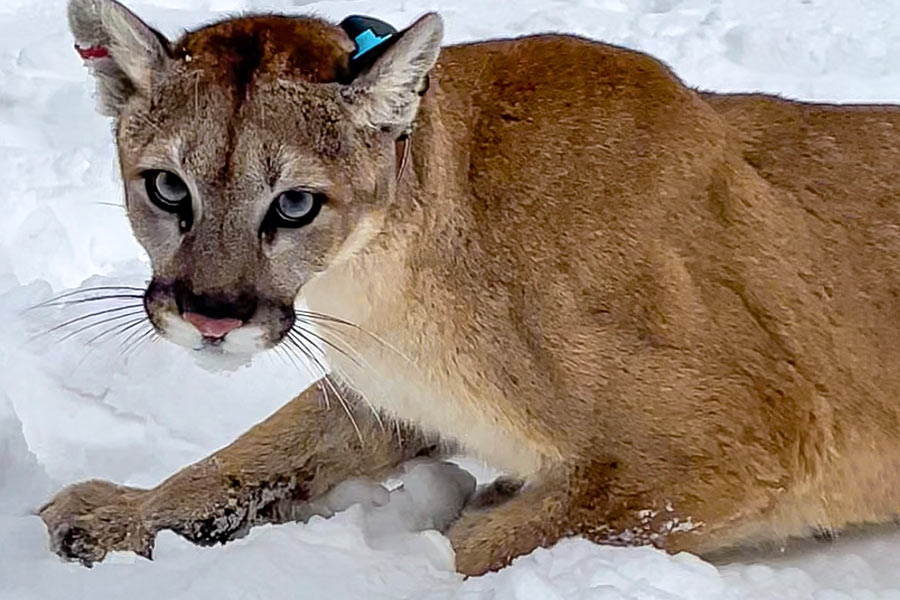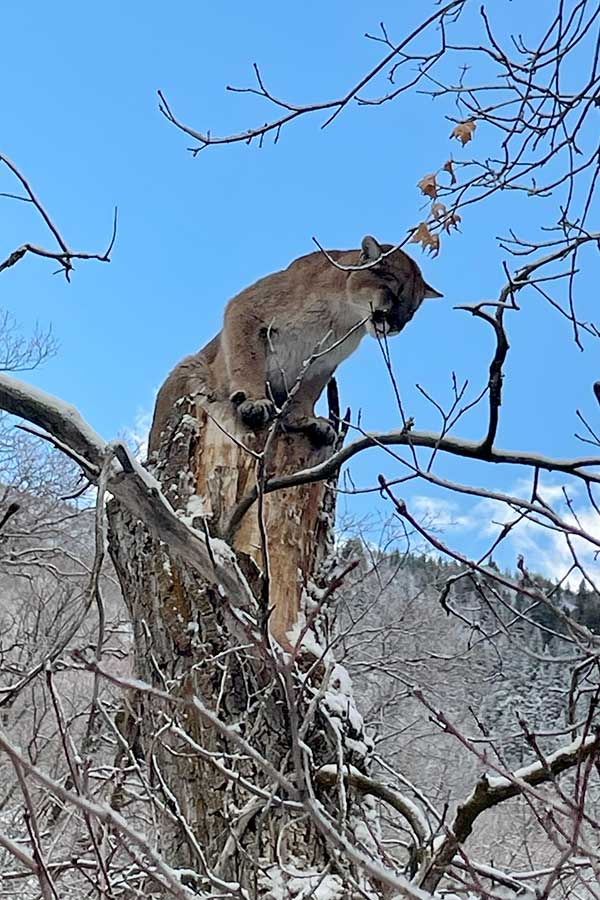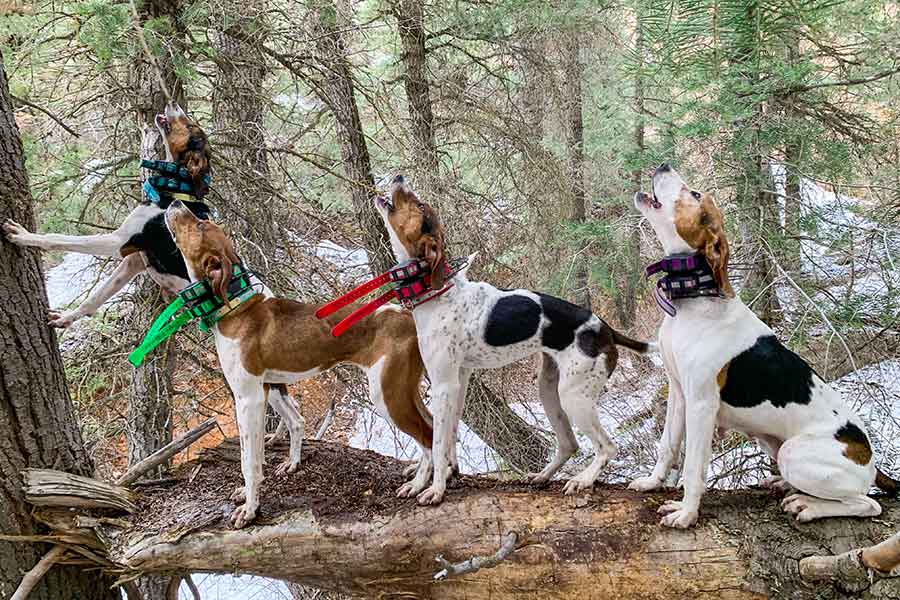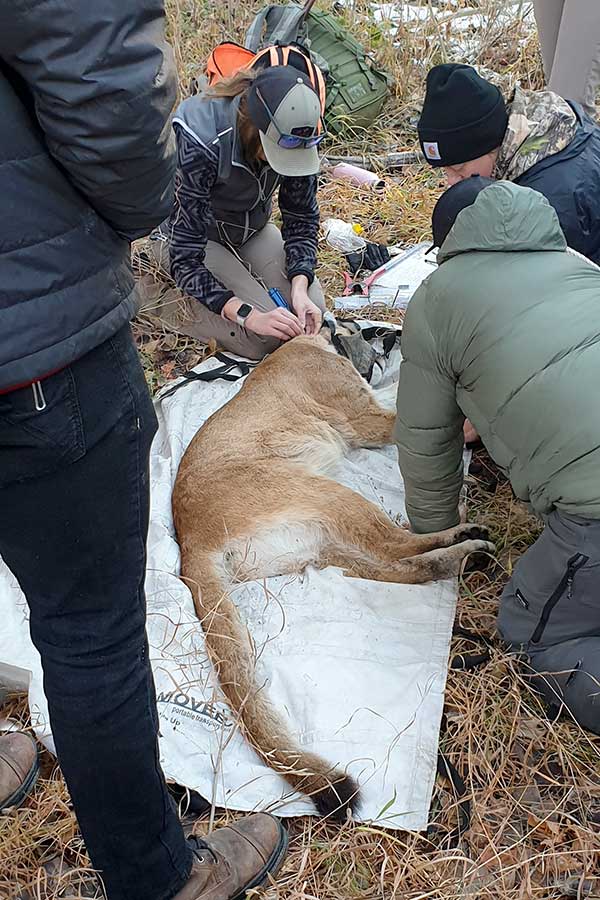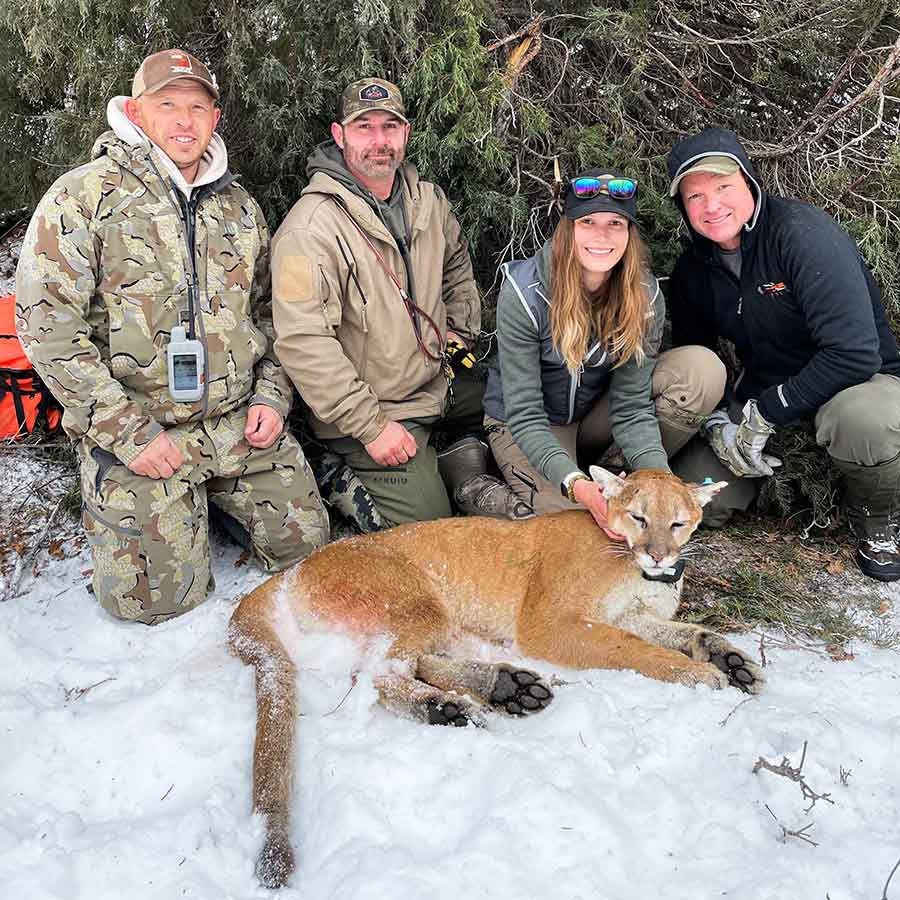The Amazing Trace: tracking the 1,000-mile journey of a Utah cougar
How GPS collaring technology provides new insights on cougar movement and dispersal for the Utah Wildlife Migration Initiative
Morgan Hinton
Southern Region Wildlife Biologist
Over the course of my career, I've had the opportunity to view and work with a variety of wildlife species here in Utah. While viewing elk, moose or mule deer is not unusual, there is one species I've had the privilege of working with that many will never see in their lifetime — cougars.
I enjoy my time studying each species I work with, but none have challenged me quite like cougars. Every time we learn something new about cougar behavior or ecology, it only generates more questions about this species. One aspect that has been particularly interesting and perplexing is how, where and why cougars move across landscapes.
Fascinating felines
Cougars are one of North America's most charismatic species. Once thought to be solitary animals, recent studies have revealed them to be more social than previously believed. They have unique reproductive behaviors, including the ability to breed and produce kittens during any time of year.
Cougars have a vast population distribution (the largest of any big cat), ranging from the Canadian Yukon all the way down to the Andes Mountains in South America.
Their historical range covered the entirety of the continental United States, but their present-day range extends from the Pacific coast to the Dakotas and Nebraska, with the addition of a small population reintroduced in Florida.
However, confirmed sightings of cougars east of their known range are becoming more frequent, indicating that individual animals are traveling great distances to reach such places.
Collaring Utah's cougars
In an ongoing effort since 2018, the Utah Division of Wildlife Resources — in partnership with researchers from Brigham Young University and Utah State University — has placed GPS tracking collars on over 60 adult cougars within the state.
The tracking collars provide biologists with valuable data on cougars, including feeding behavior, reproduction, survival, cause-specific mortality and movement.
So, how does one capture an animal as large and fierce as a cougar? We capture cougars by using trained hounds that track the cougars by scent to a tree the cougar is located in. (A huge thank you to the hound handlers who've helped with this research effort.)
Biologists are then able to tranquilize the cougar with a dart and use a harness to safely lower it from the tree, once it is asleep. After the cougar is on the ground, samples and measurements are collected and the cougar is fitted with a GPS tracking collar. After processing is over, we use a second drug to wake the cougar up and it's off on its way!
While cougars don't share the same migratory behavior we see with other species (like elk and deer), a number of cougars exhibit fascinating movements called dispersal events.
How are migration and dispersal events different? Unlike a migration event, which is roundtrip, a dispersal event is a one-time movement away from a home range that is not returned to. Dispersal events are most common in young animals, although adults may display them too. The greatest drivers of dispersal are often resource availability and inbreeding avoidance.
Through the use of GPS tracking collars, we have been able to document some incredible movements of cougars from here in Utah. Multiple collared cougars have made large movements both within the state and to neighboring states, including Colorado, Idaho, Nevada and Wyoming. One cougar, however, made an incredible 1,000-mile journey from her home on the Wasatch mountains to her final destination in eastern Colorado.
I would walk 500 miles and I would walk 500 more...
On July 4, 2022 at 2 a.m., a two-year-old collared female cougar — designated F66 by the researchers — sat on the banks of the Confluence bend of Flaming Gorge Reservoir in Wyoming. A little over 220 miles into her journey, she had a choice to make: turn around and return north or make a chilling plunge into the water. Shockingly, F66 chose the latter and swam at least a quarter mile across the reservoir to reach the other side and continue her travels south.
This was just one of the incredible events of her journey, which totaled a little over 1,000 miles! She would visit three states — Utah, Wyoming and Colorado — and would cross busy highways such as I-80 (twice), I-25, I-70 and Highway 40 throughout her five-month-long trek.
F66 was first captured and collared in the Wasatch mountains in February 2022 as part of an ongoing study with BYU. She remained in the area until May 30, the day her long walk began. She consistently stayed on the move, only stopping every so often to eat.
She completed 1,000 miles in less than 165 days, averaging 6 miles per day — with some days exceeding more than 20 miles of travel! Once up and over the Rocky Mountains, she continued her journey east, crossing 75% of the state of Colorado before her death on Nov. 13, 2022. In conjunction with Colorado Parks and Wildlife, a biologist and wildlife veterinarian determined she had been killed by another cougar.
What's next?
F66's journey is one of the furthest ever recorded for GPS-tracked cougars. Although dispersal events of this magnitude are not common, they have remained fairly undetected due to lack of reliable GPS data.
As cougar studies become increasingly more common, especially within Utah, we are now identifying more than just the incredible movements made by some animals. Biologists are using this data to identify important movement corridors for cougars and identify how movement is influenced by age and sex.
This information is crucial to understanding population dynamics and improving management strategies for cougars within Utah and surrounding states.
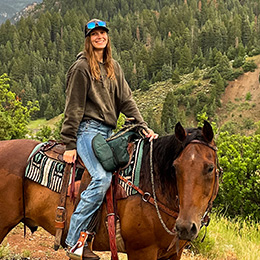
Want to learn more? Listen to the DWR "Wild" podcast!
In this episode, DWR Game Mammals Coordinator Darren DeBloois and Randy Larsen, a BYU Professor in the Department of Plant and Wildlife Sciences, talk about cougars in Utah and the fascinating things we are learning about them through ongoing research studies.


